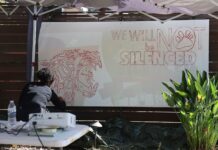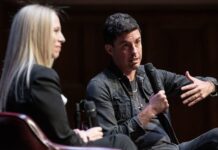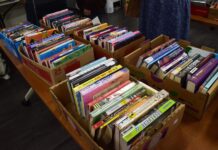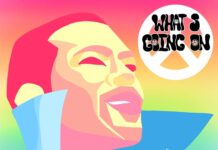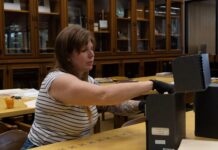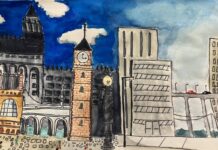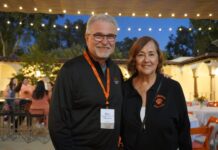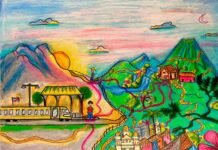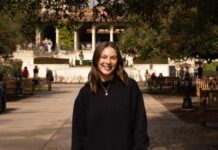Author: Mallory Nezam
“I’m not interested in it if it’s not uncomfortable,” Danzy Senna said at her public reading in Morrison Lounge on Thursday, Nov. 20. Senna is Occidental’s Remsen Bird visiting author for the 2008-2009 school year and is currently teaching the Advanced Creative Writing class.
Known as a writer who accesses those uncomfortable and complicated places in people and moments in our lives, Senna said when she doesn’t want to write a scene is when she should keep going. Senna delves into the unsettling complexities of human drama and communicates things that people cannot communicate to themselves, making her respected as a writer.
Senna has published two novels, Symptomatic and Caucasia. The latter, a popular piece concerning bi-raciality, is used in classrooms all over the country, including Occidental. It landed Senna the Book-of-the-Month Stephen Crane Award (1998) for First Fiction and the Alex Award for the American Library Association (1999).
In 2000, she was also a finalist for the International IMPAC Dublin Award. Caucasia won the 1998 Los Angeles Times Book of the Year Award. Apart from her awards for Caucasia, Senna received the Whiting Writers Award in 2002. Currently, she is working on a third book, a memoir entitled Where did you Sleep Last Night? A Personal History, which will be published in May 2009.
Senna grew up in Boston, in a mixed-racial family – like many of the characters in her books. She hails from a literary family, her father a writer, her mother and aunt both established poets.
At her reading, Senna chose to share excerpts from a novella in its sixth draft, entitled Other Languages Are All We Have. The story is set in Los Angeles in the mid-90s and follows, from a close third-person perspective, the falling movie-star Calypso.
She read four short chapters, the first, a character portrait of her leading lady, traces Calypso’s rise and fall of stardom and her sad, murky existence after all the glitz has washed away. In the second vignette, Calypso is shopping with her unemployed, grungy-artist brother who is watched suspiciously by an Eric Estrada-looking security guard and a sales clerk. To spite them, Calypso steals her brother a pair of sunglasses. The third chapter is a short scene in which Calypso confronts a man with outstretched arms in Santa Monica and is disappointed to learn that he is only a stranger. In the last chapter Senna read, the now pregnant Calypso shares with her husband ideas for baby names: Diego and Soledad. Her husband, clearly unsatisfied, suggests Sophie and Benjamin. After an internal struggle, Calypso quietly obliges.
Senna became interested in the character of Calypso, because, she says, “I’m interested in fame and the moment when fame has passed someone by and they haven’t been able to live up to it.”
If you ask Senna about her writing process, the writer is at a loss of words. She explains the aftermath of the creative process as a period of “amnesia.” Her process is “so subconscious and organic” that she has troubling remembering her thought process as she wrote and in what order she wrote things.
Speaking of organic, it wasn’t until an organic chemistry test that Senna had her heart set on writing. In her undergrad years at Stanford, she was an aspiring pre-med student until “horribly failing” her organic chemistry class led her to realize that her real talent lay in exercising “the other side of the brain.” Although she tried to break away from the literary trend of her family, Senna was, too, was clearly destined to become a writer.
This article has been archived, for more requests please contact us via the support system.
![]()


